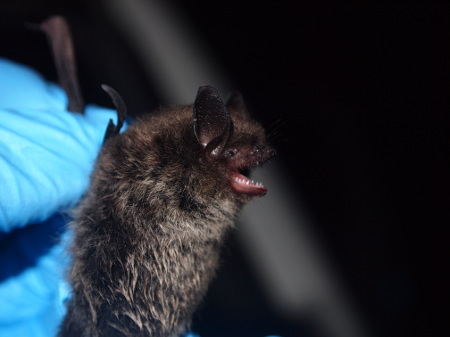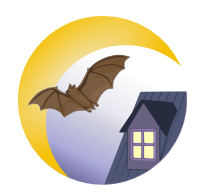Little brown bat

Credit: J. Froidevaux / F. Fabianek
Latin name: Myotis lucifugus
Average size: Total length of 8-9.5 cm
Wingspan: 21-27 cm
Weight: 5-14 g
External characteristics: This bat resembles the northern long-eared myotis. Its fur colour is variable, ranging from olive brown to almost black. Its fur is shiny and is darker at the base than it is at the tip. You can identify this bat by its several long hairs that extend from its feet to its claws, or sometimes even further. This bat has a rounded tragus that extends half the length of the ear. This differs from the tragus of the northern long-eared myotis, which has longer ears and a tragus that is longer, thinner and pointier at the tip.
Habitat: The little brown myotis can be found all across Canada, however, their populations have experienced a steep decline in eastern North America due to white-nose syndrome. The little brown myotis can be found in a wide range of habitats, including forested regions close to sources of water as well as urban areas. Summer roosts are found in buildings and other man-made structures, tree cavities, rock crevices, caves and under tree bark. During the winter, it hibernates in caves or mines.
Reproduction: Mating occurs in the fall, and sperm is stored in the body of females throughout the winter. Fertilization occurs in the spring. The gestation period lasts between 50 and 60 days and the young are born between May and July. Female little brown bats give birth to just one pup that weighs around 2 grams. Females return to the same maternity colony site each year.
Federal status: Endangered
Seen in: Alberta, British-Columbia, Manitoba, New-Brunswick, Newfoundland and Labrador, Northwest Territories, Nova-Scotia, Nunavut, Ontario, Prince Edward Island, Quebec, Saskatchewan, Yukon

